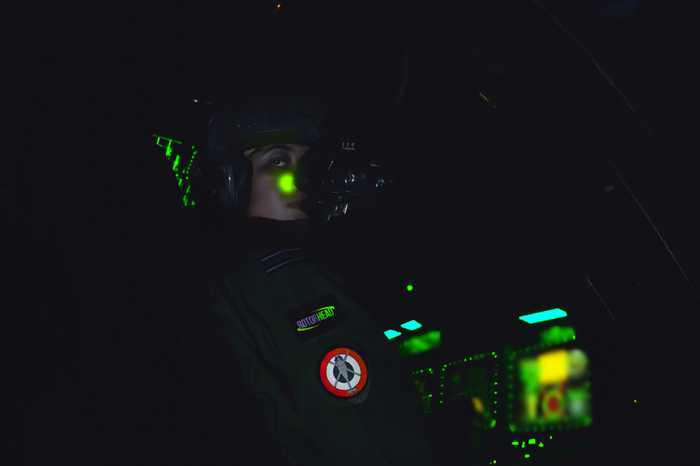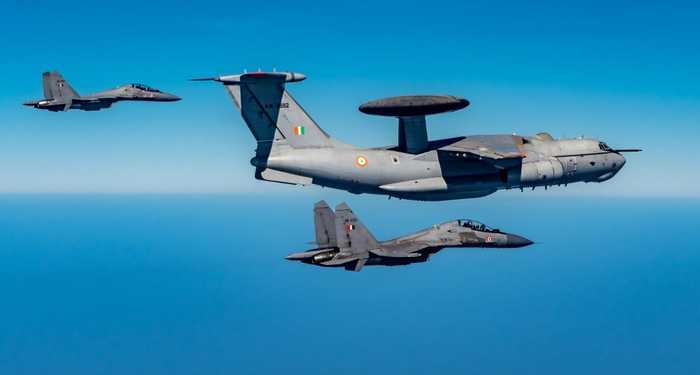Published 13:17 IST, September 4th 2024
Aerospace 4.0 Revolutionizing the Aviation Industry's Future with AI and ML Integration
Aerospace 4.0 is transforming the aviation sector, integrating AI and ML into every facet of operations, from predictive maintenance to optimized flight paths.
- Defence
- 5 min read
New Delhi, India- The combination of cutting-edge technologies like artificial intelligence (AI) and machine learning (ML) is poised to revolutionize the aviation sector. This new era, known as Aerospace 4.0, is characterized by unprecedented levels of automation, digitalization, and data sharing across manufacturing and operating processes.
It is paralleling the larger Industry 4.0 transformation. Aerospace 4.0 is more than just a catchphrase; it represents a fundamental change that will improve aviation industry productivity, security, and competitiveness.
Digital transformation of the aviation sector
Aerospace 4.0 is defined by the broad use of cloud computing, IoT, and cyber-physical systems. With over 5,000 sensors installed, modern aeroplanes can produce up to 10 GB of data each second. This continuous flow of data is a goldmine for artificial intelligence (AI) and machine learning (ML) algorithms, offering a plethora of information that can be instantly examined to generate actionable insights. The immediate processing and interpretation of large volumes of data using AI/ML enables more informed decision-making, revolutionizing the operation of contemporary avionics systems and fostering a more robust and efficient aerospace sector.

Predictive maintenance is one of the most exciting uses of AI in aviation. Artificial intelligence (AI) can forecast when a component is likely to break by evaluating sensor data from aircraft in real time. This enables maintenance personnel to take care of problems before they get serious. This proactive strategy lowers the likelihood of in-flight malfunctions, boosts safety, and cuts down on aircraft downtime, all of which increase fleet utilization and operational effectiveness.
To recommend the most effective flight paths, AI-powered systems process enormous volumes of data, such as weather patterns, air traffic, and fuel use. As a result, airlines save money and their carbon emissions go down, which helps promote more environmentally friendly aviation operations.
Enhanced safety with AI/ML
Pilots can now receive real-time decision support from AI-powered technologies. For example, AI can identify possible threats that a pilot would not immediately notice, including rapid weather changes or mechanical anomalies, by analyzing data from many sensors and external sources. By providing timely alerts and making remedial action suggestions, these technologies can improve situational awareness and lower the possibility of human error.
-1725435364171.webp)
Drones, or unmanned aerial systems (UAS), now have significantly more capabilities than they had in the past thanks to the application of AI. With the help of sophisticated AI algorithms, these systems, which are usually difficult for manned aircraft to navigate, can operate independently in a variety of tough situations, including those where GPS is blocked. AI-powered unmanned aerial systems (UAS) find use in counterterrorism, emergency response, and urban monitoring.
Global and national implications
AI/ML integration into aircraft systems is not happening in a vacuum. Governments and international aerospace firms are making significant investments in the field because they are acutely aware of the competitive advantages these technologies offer.
Leading aerospace companies, such as Lockheed Martin, Airbus, and Boeing, are helming this technological revolution. These businesses are devoting billions to AI research and development, aiming to enhance everything from air traffic control to aircraft design.

AI research has exploded in India thanks to the Atmanirbhar Bharat program, especially in the aerospace and defence industries. The creation of the Defence AI Council (DAIC) is a critical step in building a framework that will facilitate the deployment of AI. This council is responsible for directing reforms at the policy level and fostering partnerships between academics, industry, and the military to create cutting-edge artificial intelligence solutions.
With large expenditures in avionics R&D, especially in the field of Unmanned Air Systems (UAS), private players in India are dramatically upending the aviation and defence industries. Indian companies are using Artificial Intelligence (AI) and Machine Learning (ML) to improve autonomous navigation and control, push the endurance limits for longer missions, and enable UAS to operate effectively in complex environments and all weather conditions.
How MSMEs are catching up
The majority of Aerospace 4.0 innovation is being driven by big businesses and government organisations, but Micro, Small, and Medium-Sized Enterprises (MSMEs) in India are also making a significant contribution. These companies, which account for 30% of the Indian economy, are essential links in the supply chain for the aircraft industry.
MSMEs can find inefficiencies, streamline operations, and improve production processes thanks to AI. This raises productivity and assists MSMEs in meeting the high standards of quality demanded by the aerospace sector. The recently launched AeroDef India 2024 serves as a crucial platform, connecting Indian and international manufacturers with India's defence MSME sector, offering these smaller enterprises the opportunity to showcase their capabilities to original equipment manufacturers (OEMs), strategic partners, and public sector units (PSUs).
Flying into the future
Aerospace 4.0, which uses AI, machine learning, IoT, and cyber-physical systems to improve safety, efficiency, and competitiveness, is a revolutionary change in the aviation sector. However, there are a lot of obstacles to overcome in making the switch to this new paradigm. The responsible and efficient use of these technologies necessitates cooperation between governments, business executives, and academic institutions.
These stakeholders have to deal with difficult moral and legal dilemmas, train workers in the required skills, and manage the wider effects of integrating AI. The way forward involves not only developing new technologies but also encouraging an ethical and sustainable kind of innovation.
Updated 15:59 IST, September 4th 2024